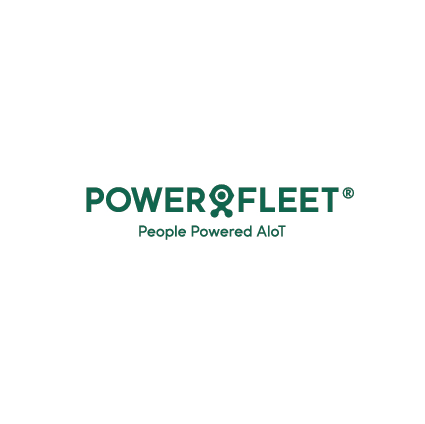As fleet operations become increasingly complex, traditional safety models are falling short. Simply recording accidents after they happen isn’t enough anymore. Leading fleets understand that the future of fleet safety is not reactive; it is proactive. Driven by technological advancements in telematics, AI, and real-time monitoring, proactive safety strategies are saving lives, reducing costs, and transforming operations.
Here’s why prevention should replace reaction, and how Powerfleet is helping fleets around the world in leading the way.
The Problem with Traditional Safety Approaches
For decades, fleet safety has centered around investigating incidents after the fact. A collision or injury would trigger a report, an investigation, and, often, corrective action. While valuable, this approach has one critical flaw: it’s always too late.
The lag between an event and the response leaves organizations exposed to unnecessary risks. During that gap, unsafe behaviors can continue unchecked, and systemic issues remain hidden until a major incident occurs.
Meanwhile, the costs associated with fleet incidents – both human and financial – are on the rise. The average cost of a fleet vehicle accident exceeds $70,000, according to the Network of Employers for Traffic Safety (NETS), and litigation related to commercial accidents is increasing sharply. Fleets can no longer afford to be passive regarding safety.
To truly protect drivers, assets, and bottom lines, a shift toward real-time, predictive safety monitoring is not only smart; it’s essential.
The New Standard: Continuous, Predictive Safety Monitoring
Proactive safety relies on two major pillars: continuous monitoring and predictive insights. Instead of waiting for accidents to happen, fleets can now detect risky behavior in real time and intervene before it escalates.
AI-Powered Dashcams and Driver Coaching
Today’s AI-enabled dashcams, such as Powerfleet’s VisionAI, do more than just record video. They analyze driver behavior on the road, identifying signs of fatigue, distraction, phone usage, tailgating, harsh braking, and other unsafe driving behaviors.
When risky behavior is detected, the system can instantly alert the driver with an in-cab warning, giving them the opportunity to correct their actions in the moment. VisionAI also automatically categorizes events by severity, helping managers in prioritizing coaching efforts and recognizing safe driving.
This immediate feedback loop turns every trip into a learning opportunity, preventing dangerous behaviors before they escalate into incidents.
Monitoring Fatigue, Distraction, and Unsafe Maneuvers
Fatigue and distraction are leading causes of accidents across industries. Traditional logs and post-incident reviews often miss these warning signs until it’s too late.
With advanced fleet management from Powerfleet’s On-Road IoT solutions, fleets can monitor critical indicators such as erratic lane changes, sudden stops, and eye or head movement patterns that signal drowsiness or distraction. Drivers receive real-time coaching cues, and managers gain visibility into risk trends across their fleet.
By tackling these issues proactively, fleets not only prevent accidents but foster a culture of accountability and continuous improvement.
In-Warehouse Safety: Vehicle-Pedestrian Interaction and Speed Zones
Fleet safety doesn’t stop at the end of the road. Within warehouses and distribution centers, vehicle-pedestrian interactions present significant risks.
Powerfleet’s in-warehouse safety solutions use proximity detection and geofencing technology to create dynamic “safe zones”. If a forklift approaches a pedestrian or exceeds a preset speed limit, visual and audible alerts activate instantly, protecting both the operator and nearby workers.
These systems also help facilities meet OSHA compliance requirements and reduce incidents that could otherwise cause severe injury or operational downtime.
Key Benefits of a Proactive Approach
Switching from a reactive to a proactive safety model unlocks several critical advantages:
Fewer Accidents and Injuries
By identifying and correcting risky behavior in real time, fleets can significantly reduce the number of accidents and near-misses. In some cases, organizations that adopt predictive monitoring have experienced a drop in preventable accidents of over 60% within the first year.
Lower Insurance Premiums and Liability
Insurers increasingly reward fleets that invest in proactive safety technologies. Reduced claims and documented risk management practices can result in lower premiums and more favorable policy terms. Additionally, real-time monitoring provides critical evidence in the event of a dispute, minimizing potential liability.
Improved Driver Performance and Morale
Drivers who receive timely, constructive feedback tend to feel more supported and engaged. With Powerfleet’s real-time coaching tools, safety becomes a daily conversation rather than an occasional reprimand. This continuous engagement not only improves skills but also boosts morale and retention.
Powerfleet’s Solutions in Focus
Leading in proactive fleet safety, Powerfleet provides a suite of solutions aimed at detecting, alerting, and preventing risks before they escalate into costly events.
VisionAI – Real-Time Video Telematics and Behavior Detection
Powerfleet’s VisionAI uses cameras to detect unsafe behaviors, including drowsiness, distraction, non-use of seatbelts, and phone handling. With real-time driver alerts and optional intelligent event categorization, VisionAI for on-road transforms traditional dashcams into proactive safety guardians.
On-Road IoT – In-Cab Coaching and Driver Scoring
Powerfleet’s On-Road IoT solutions enable real-time driver tracking and management. Managers gain actionable insights into trends in driver behavior and key metrics, such as harsh braking incidents, idling time, and fuel consumption. Drivers benefit from accurate and personalized feedback that helps promote safe driving habits. Over time, this proactive approach results in safer roads, reduced costs, and improved operational efficiency.
Forklift Safety & In-Warehouse Solutions – Pedestrian Alerts and OSHA Compliance
Inside the warehouse, Powerfleet’s forklift safety systems create safer environments by preventing vehicle-pedestrian accidents. Dynamic speed zoning, proximity alerts, and geofenced restricted areas protect workers and help facilities meet strict OSHA safety standards, ultimately reducing injury-related downtime and costs.
A Safer, Smarter Fleet Starts with Data
Reactive safety models are a relic of the past. To address today’s challenges, fleets must adopt an always-on safety mindset – one that leverages real-time data, predictive insights, and proactive interventions.
By investing in technologies such as VisionAI, On-Road IoT, and in-warehouse safety solutions from Powerfleet, organizations not only protect their employees but also achieve a strong return on investment through fewer accidents, lower insurance premiums, and enhanced driver performance.
